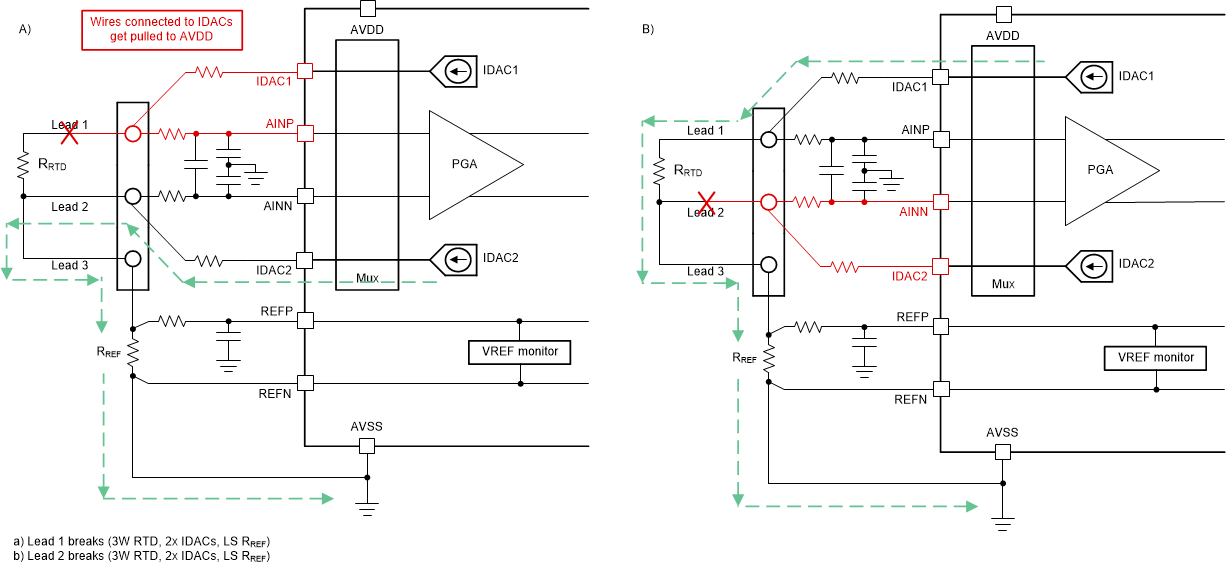SBAA483 February 2021 ADS1120 , ADS112C04 , ADS112U04 , ADS114S06 , ADS114S06B , ADS114S08 , ADS114S08B , ADS1220 , ADS122C04 , ADS122U04 , ADS124S06 , ADS124S08 , ADS125H02 , ADS1260 , ADS1261 , ADS1262 , ADS1263
- Abstract
- Trademarks
- 1Introduction
- 2Features Used to Detect Wire Breaks in RTD Systems
- 3Wire-Break Detection Methods for Different RTD Configurations
- 4Settling Time Considerations for RTD Wire-Break Detection
- 5Summary
- A How Integrated PGA Rail Detection Helps Identify Wire Breaks
- B Pseudo-Code for RTD Wire-Break Detection
3.2.2.1 Detecting Lead 1 or 2 breaks in a two IDAC, 3-wire RTD system using a low-side RREF
In the low-side RREF configuration, a break in lead 1 or lead 2 eliminates the path to ground for one IDAC. However, the second IDAC current still flows through RREF such that a VREF monitor fault is unlikely. Figure 3-8 shows this scenario.
 Figure 3-8 Lead 1 (Left) or Lead 2 (Right) Breaks
in a Two-IDAC, 3-Wire RTD System Using a Low-Side RREF
Figure 3-8 Lead 1 (Left) or Lead 2 (Right) Breaks
in a Two-IDAC, 3-Wire RTD System Using a Low-Side RREFIf either lead breaks in the configurations depicted in Figure 3-8, the voltage across RREF is reduced by one-half compared to normal operation. However, this reduction may still not be sufficient to trip the VREF monitor in all cases and for all ADCs.
Instead, a diagnostic measurement is required, similar to a lead 2 break in the one-IDAC, 3-wire RTD system. And similar to any diagnostic measurement that interrupts the precision RTD measurement, choose how often to interleave diagnostics by balancing increased latency with the required system response time to a fault condition.
In the case of the two-IDAC, 3-wire RTD system using a low-side RREF, the diagnostic measurement is fairly straightforward: turn off the IDAC that is still providing current to RREF, which in turn trips the VREF monitor. For example, to detect a fault on lead 1 (Figure 3-8a), turn off IDAC2. To detect a fault on lead 2 (Figure 3-8b), turn off IDAC1. In both cases, the VREF monitor can detect a fault because no current flows across RREF.